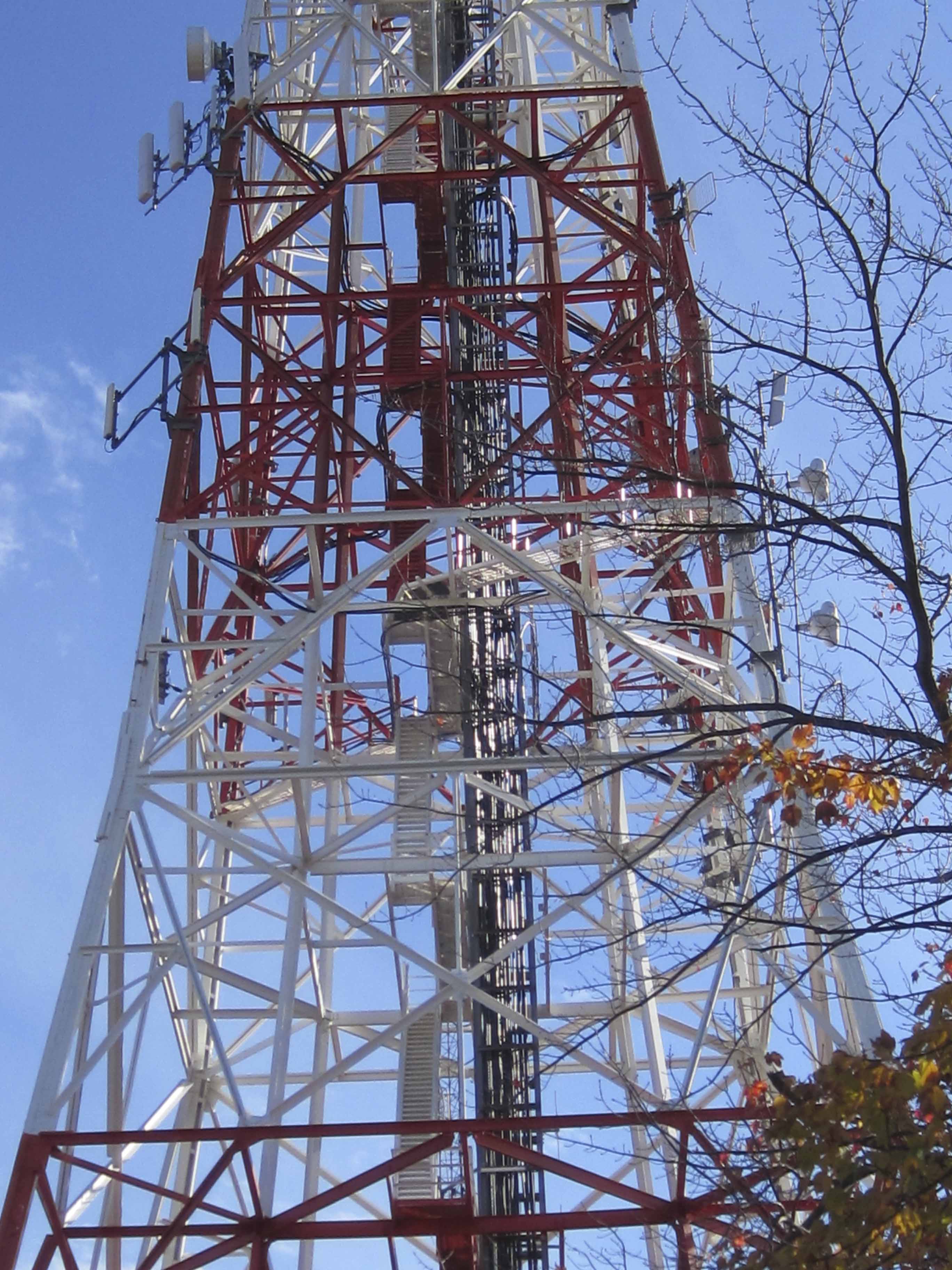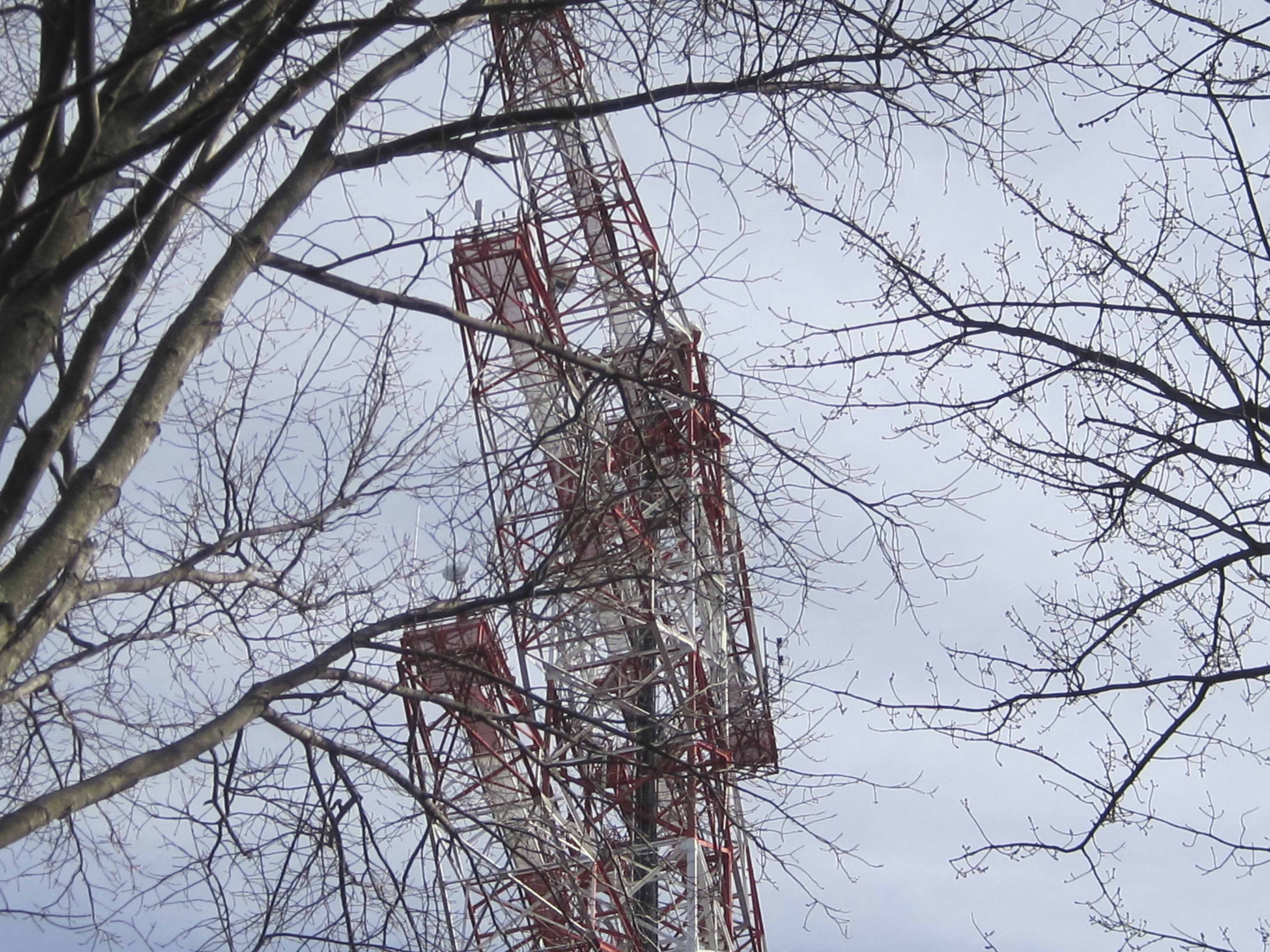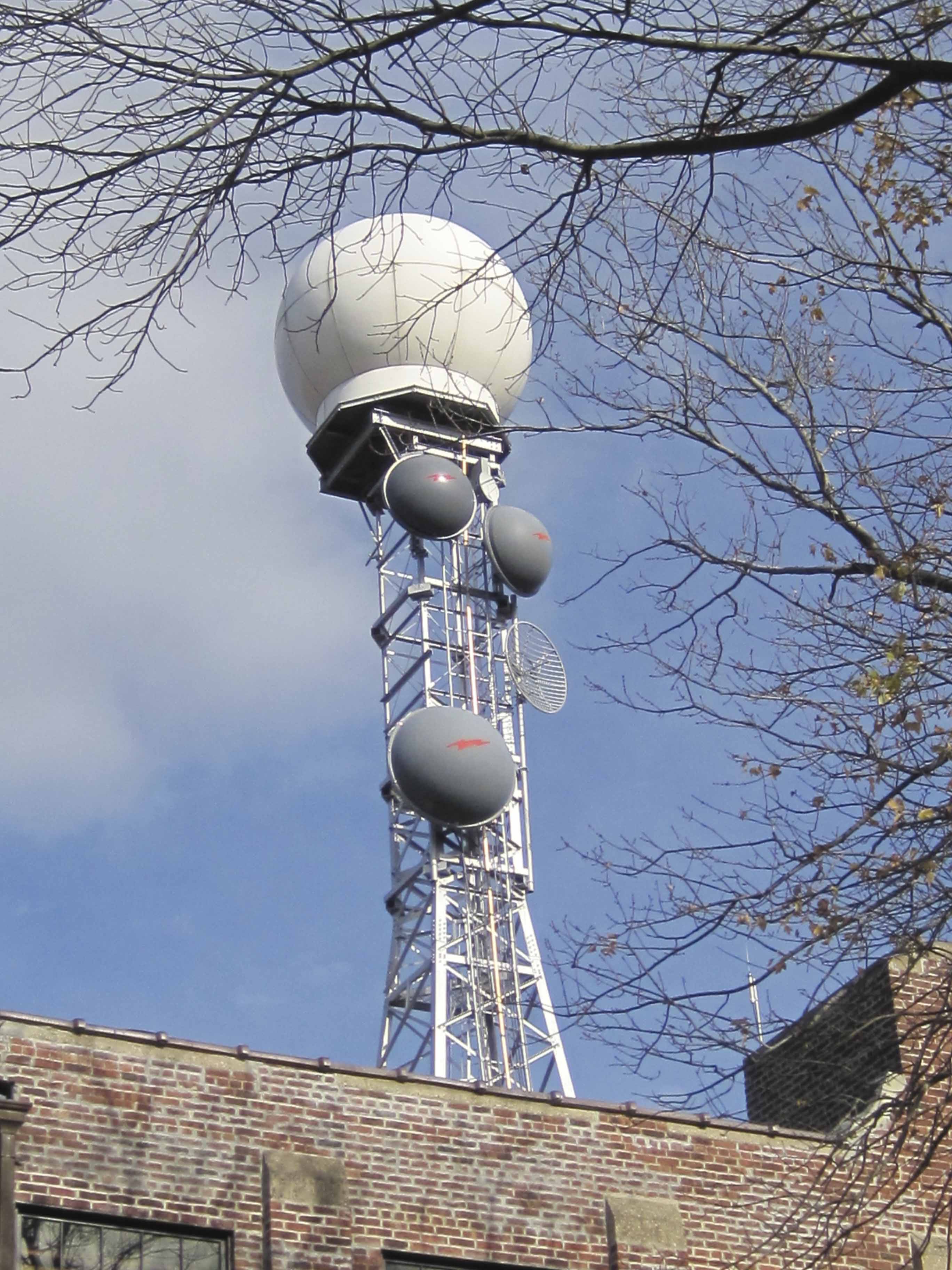| |
| |
I had the great pleasure of venturing out to Alpine, New Jersey this past Saturday. I was honored to receive an invitation from Dave Amundsen, the Director of Engineering for CSC Management (the organization who presently owns the Alpine site), to celebrate the 75th anniversary of Major Armstrong’s public demonstration of FM in 1935, through a live radio broadcast.
To be able to stand in close proximity to the original Armstrong tower was truly an incredible experience, and the engaging conversations with the many radio hams in attendance was priceless.
Steve Hemphill was kind enough to serve as a tour guide through the multitude of apparatus, including the one used to transmit the anniversary broadcast. Steve personally built a replica of Armstrong’s 42.8 Mhz FM transmitter, and has lent his helping hand to restore a variety of other instruments on the Alpine site.
The GE BT-1-B 250 watt FM broadcast transmitter that resembles an old refrigerator (photographs immediately below) is Steve’s handiwork. He purchased the GE 250 watt transmitter off Ebay back in August 2002 and refurbished it back to its original shiny and functioning glory.
| |
I posted some photographs of the back interior of the GE transmitter to illuminate the amount of work involved in this project. You will see all new wiring–really quite incredible!
| |
| |
This particular GE transmitter originally belonged to WAVE-FM in the late 1940s and was subsequently sold to the Louisville Free Public Library for use as their transmitter at WFPL-FM, sometime in the 1950s. In 1950, public radio made its debut with WFPL when the Louisville Free Public Library became the first library in the country to obtain a radio license. They started broadcasting using a GE model BT-11-B transmitter (10 watt unit), later upgrading to the model seen here.
Armstrong’s tower stands as it did decades ago. The bottom of the tower has changed with the construction of a building that serves to house most of the apparatus.
| |
 |
 |
During World War II, Armstrong carried out contract work for the Signal Corps. The tower built for his work on radar still stands (photographs below), albeit with some modifications.
 |
| |
The W2XMN building contains a small museum housing various communications equipment. The photographs below are all from the museum.
| |
The 30 KHz FM side-channel multiplex receiver (photographs above), is a prototype of the receiver designed by John Bose in 1953. The receiver is described in detail in US Patent 2,835,803, issued to Bose in 1958 May 20.
| |
| |
| |
| |
James O’Neal was kind enough to explain the meaning of Conelrad (CONtrol of ELectronic RADiation) to me. I have seen the CD triangle in a circle emblem on the back of radio apparatus and wondered what it signifies. Mr. O’Neal explained that during the Cold War Conelrad was set up to provide warnings to the public. The system was introduced in 1951, and if an alert was given, radio stations were to go off the air. Chosen stations were to move to either 640 or 1240 KHz, continually alternating so as to avoid enemy direction finding equipment capable of locking into US locations by using radio stations as beacons. In 1963, the Emergency Broadcast System (EMS) replaced Conelrad. Since 1997, the Emergency Alert System (EAS) has been used.
Also in attendance was John Nashmy, who in the aftermath of 9-11, assisted in moving a number of New York television stations to the Alpine site so they could continue broadcasting.
Thanks for the information on Alpine.
About the FM bandwidth; when FM showed its much better performance over AM, there must have quite a scramble for bandwidth in frequencies above AM and short wave, with AM people protecting their turf and television wanting their piece of the action and the military wanting all of it, especially for Radar, not to mention the international scramble.
The following is from Wikipedia.
“The original bandplan in North America used 42–50 MHz, but this was changed in 1945. In Canada and the United States there are 101 channels, numbered from 200 (87.9 MHz) to 300 (107.9 MHz) in increments of 200 kHz. 87.9 MHz, while technically part of TV channel 6 (82.0–88.0 MHz), is used by two class-D stations in the United States. Portable radio tuners often tune down to 87.5, so the same equipment can be marketed worldwide. Automobiles are unlikely to go overseas, but usually tune down to 87.7, so that TV channel 6 audio on 87.75 MHz can be received (although at a somewhat lower volume).
In the United States, the twenty channels with center frequencies of 88.1–91.9 MHz (channels 201–220) constitute the reserved band, exclusively for non-commercial and educational (NCE) stations. The other channels (92.1–107.9 MHz, and 87.9 MHz, where used) may be used by both commercial and non-commercial stations. (Note that Canada and Mexico do not observe this reservation.)
Originally, the United States FCC devised a bandplan in which stations would be assigned at intervals of 4 channels (800 kHz separation) for any one geographic area. Thus, in one area, stations might be at 88.1, 88.9, 89.7, etc., while in an adjacent area, stations might be at 88.3, 89.1, 89.9, 90.7 etc. Certain frequencies were designated for Class A only (see FM broadcasting), which had a limit of 3 kW ERP and an antenna height limit for the center of radiation of 300 feet (91.4 m) height above average terrain (HAAT). These frequencies were 92.1, 92.7, 93.5, 94.3, 95.3, 95.9, 96.7, 97.7, 98.3, 99.3, 100.1, 100.9, 101.7, 102.3, 103.1, 103.9, 104.9, 105.5, 106.3 and 107.1. On other frequencies, a station could be Class B (50 kW, 500 feet) or Class C (100 kW, 2000 feet), depending on which zone it was in.
In the late 1980s the FCC switched to a bandplan based on a distance separation table using currently operating stations, and subdivided the class table to create extra classes and change antenna height limits to meters. Class A power was doubled to 6 kW, and the frequency restrictions noted above were removed. Basically, as of late 2004, a station can be “squeezed in” anywhere as long as the location and class conform to the rules in the FCC separation table.[2] The rules for second-adjacent-channel spacing do not apply for stations licensed prior to 1964.”
The odd part is that FM is good at almost any carrier wave (CW) frequency but the designated bandwidth seems to channel FM into that small span.
Joe Mislan
Thank you for such an interesting article on a piece of Americana which made us who we are today.